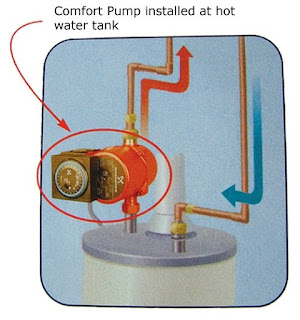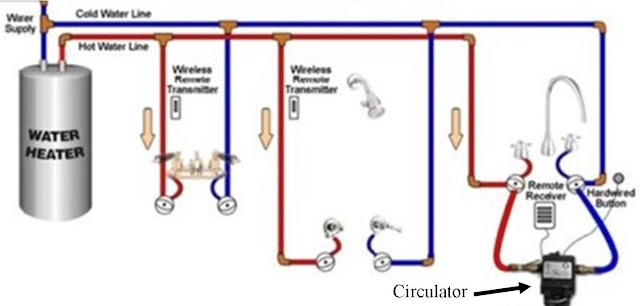Inspecting Hot Water Circulation Systems


As there are advances in hot water supply, we are seeing more hot water circulating systems in residential applications. They work by circulating hot water throughout the hot water piping system continuously by a circulator which allows hot water to be instantly available at the fixtures. These systems have been used in hotels, condos, and other commercial applications for many years.
A hot water circulation system can be installed on almost any existing hot water tank or indirect hot water tank. The circulator may be installed on the hot water pipe at the tank and a mixing valve at the furthest fixture. Another configuration has a circulator and mixing valve together at the furthest fixture. Using the cold water line as a return at the furthest fixture the circulator will activate (some have a starter button, motion control, or are automatic), long enough to supply hot water to the fixture and then automatically stop. The check valve (by-pass valve) in the circulator will not allow the hot water to enter the cold pipe. In automatic systems (less efficient) the mixing valve opens automatically when the temperature drops allowing water to circulate and then closes when it reaches a set temperature.
Although convenient, these systems usually consume more energy than conventional hot water systems. Some energy rating services recommend insulating all of the hot water pipes and installing a timer that will run the system at selected times when hot water would be most in demand. The hot water tank detail above shows a circulator with a timer.
When inspecting a hot water circulation system, a home inspector should be looking for the following:
- The circulator should normally be installed on the hot water discharge pipe from the hot water tank
- The circulator should not interfere with the draft hood
- A thermal by-pass valve is installed at the furthest fixture from the hot water tank
- The connections at the furthest fixture should be flexible stainless steel
- Check for leaks at the circulator and at the furthest fixture around the by-pass valve
- Have your client review the manufactures installation and users guide if available. You may be able to find that information on line and attach it to your clients report.
Related Articles:
- Sewage Ejector Inspection
- PEX Is Not The Perfect Solution (VIDEO)
- Inspecting Tankless Gas Hot Water Heaters
- Inspecting Direct Vent Water Heaters
Want To Learn More? Click HERE to Search Our Full Database Of Home Inspector Newsletters.



